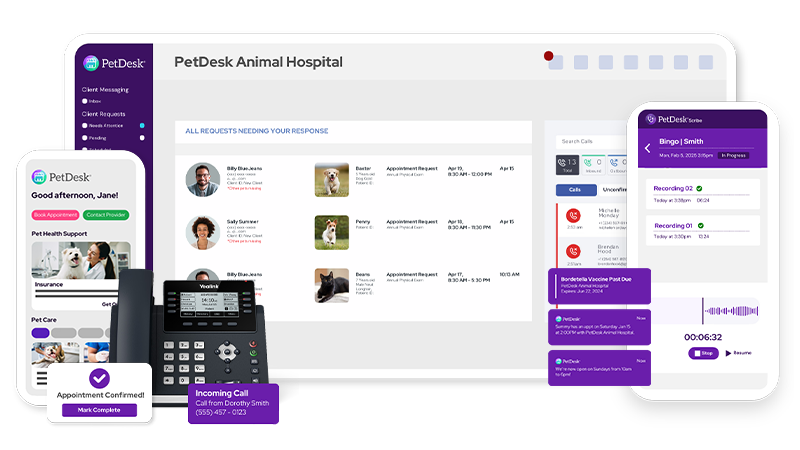the petdesk blog
Veterinary Team Culture
Build and support a healthy, motivated veterinary team with insights on leadership, wellness, and collaboration.
Let’s celebrate your veterinary practice managers!
When in-clinic challenges arise, there’s one type of veterinary...
Empowering your practice manager: tips for ongoing support
Many factors contribute toward a successful veterinary clinic, especially...
Thoughtful Ways to Show Appreciation for Vet Techs
Veterinary technicians—otherwise known as the backbone of veterinary...
How to Celebrate Your Team This National Veterinary Technician Week
Vet Tech Appreciation Week is October 12-18, 2025! This year, the week of...
PetDesk on the road: sweet highlights from our San Diego ice cream truck!
What better way to enjoy a well-deserved treat than having the PetDesk...
Overwhelmed? Veterinary technology is here to help!
Occupational burnout is a serious concern for professionals working in...
Stress and compassion fatigue: addressing the growing crisis among veterinary staff
Veterinary professionals are also professional multitaskers, but...
What vet techs really want (and deserve!) in the workplace
Professionals in the veterinary industry overcome a lot of daily...
How To Help Your Veterinary Front Desk Team With Burnout
You play an integral part in helping your veterinary front desk team with...
Celebrate Your Team During Veterinary Receptionist Week!
Veterinary Receptionist Week is an excellent time to thank the wonderful...
10 Unique Ideas to Celebrate Your Veterinary CSRs
What to Get Your CSRs? Veterinary CSRs (Customer Service Representatives)...
Healing the Healers: S.O.S. for Veterinary Burnout
Hey there, veterinary superheroes! If you’ve ever felt like your passion...















